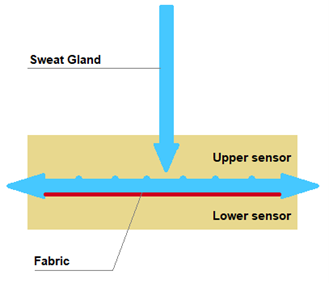Moisture transport in cotton woven fabrics of different weaves and linear density of weft yarn
DOI:
https://doi.org/10.25367/cdatp.2022.3.p171-179Keywords:
cotton woven fabrics, weave, Moisture Management Tester, moisture of liquid, physiological comfort.Abstract
Cotton is the most common raw material of natural origin applied in clothing manufacturing. Clothing currently available on the market is usually made of plain weave fabrics. As part of this study, 3 pairs of cotton woven fabrics with different weaves (plain, twill 2/2 S, transverse rep 1/1) and different linear density of weft yarn (60 tex and 100 tex) were tested. The scope of research included determination of parameters characterizing the ability of fabrics to transport moisture in liquid form. The investigation was carried out on the Moisture Management Tester M290. The investigations allowed assessing the moisture transport of individual fabrics as well as the influence of both weave and linear density of weft yarn on the parameters characterizing the liquid moisture transport in the fabrics.
References
Chinta, S. K.; Gujar, P. D. Significance of Moisture Management in Textiles. International Journal of Innovative Research in Science, Engineering and Technology 2013, 2(6), 2104-2114.
Fanger, P.O. Thermal Comfort; Copenhagen, Danish Technical Press, 1970.
Matusiak, M. Moisture Management Properties of Seersucker Woven Fabrics of Different Structure. Fibres & Textiles in Eastern Europe 2019, 27(3), 43-50.
Matusiak, M. Thermal Insulation of Woven Fabrics for Clothing; Works of Textile Research Institute, Special edition, Ed. Textile Research Institute, Lodz, Poland, 2011.
Smith, C. W.; Cothren, J. T. Cotton: Origin, History, Technology, and Production. John Wiley & Sons, Inc. New York, 1999.
Encyclopedia of Techniques. Light industry (in Polish), WNT, Warsaw, 1986.
WICKING WINDOWS™ MOISTURE MANAGEMENT TECHNOLOGY FOR COTTON, Technical Bulletin, Cotton Incorporated, TRI 3020.
Wallace, M. 100% Cotton Moisture Management. JTATM 2002, 2(3), 1-11.
Szosland, J. Woven structures (in Polish), Polish Academy of Science, Lodz, 2007.
Baker, L. B. Physiology of sweat gland function: The roles of sweating and sweat composition in human health. Temperature (Austin) 2019, 6(3), 211-259.
Anderson, H. Cardiovascular, and muscular factors related to exercise after pre-cooling. J. Appl. Physiol. 1991, 64, 803-811.
AATCC Test Method 195-2011, Liquid Moisture Management Properties of Textile Fabrics.
SDL Atlas MMT M 290 manual.

Downloads
Published
How to Cite
Issue
Section
License
Copyright (c) 2022 Dominika Kamińska, Małgorzata Matusiak

This work is licensed under a Creative Commons Attribution-NonCommercial-NoDerivatives 4.0 International License.





